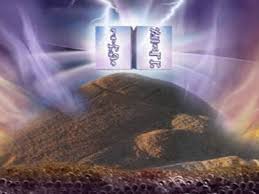A subtle and fascinating hint to how history unfolded since the revelation at Har Sinai is pointed out by Rav Hutner – in two words used at the start of the parshah.
“Hashem came from Sinai,” we read, “… and shone forth from Seir; He projected from Har Paran…” (Devarim 33:2).
The word zarach clearly means “shone”; hofi’a, a less common word, implies radiating or projecting.
The Gemara (Avodah Zarah 2b) and Sifri (Devarim 343) recount how Hashem offered the Torah to other nations but each asked what it contained and, informed of a law that went against its grain, refused to accept it.
Rashi alludes to that account, and identifies Seir with “the children of Esav” and Har Paran with “the children of Yishmael.” Both of which peoples were offered but rejected the Torah.
Rav Hutner (in his Pachad Yitzchak ma’amarim on Shavuos) sees a “subtle and transparent hint” in the verbs “shone” and “radiating.”
Esav, which is Edom, which is Rome, stands for the falsehood of idolatry, the worship of a man. Yishmael, the progenitor of the Arab world, stands for the embrace of a false prophet. Rav Hutner doesn’t get more specific than that. Neither shall I.
The refusals of Edom and Yishmael to reject, respectively, idolatry and false prophethood, empowers the Jews’ ready acceptance of the Torah and reflects what happened at Sinai.
The “shining” corresponds to the first two of the Aseres Hadibros, which “shone” directly from Hashem upon our ancestors at Sinai. And the less direct “projection” refers to the remainder of the Dibros, which were merely witnessed by the people (after their plea) but transmitted to the ultimate prophet, Moshe Rabbeinu, the “father of all true prophets.”
© 2024 Rabbi Avi Shafran
